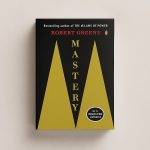The Diary of a CEO: The 33 Laws of Business and Life by Steven Bartlett distills the author’s journey from dropout to celebrated entrepreneur into a timeless framework for success. Drawing from first-hand experience, high-profile interviews, and behavioral science, Bartlett unveils practical, enduring laws organized into four pillars – The Self, The Story, The Philosophy, and The Team. Each offers clear, actionable guidance for mastering personal growth, leading with influence, and building high-performing organizations. With candid storytelling and precise insight, The Diary of a CEO by Steven Bartlett challenges conventional wisdom and equips readers to achieve, sustain, and scale meaningful success in both business and life.
1. Introduction to The Diary of a CEO by Steven Bartlett
The Diary of a CEO: The 33 Laws of Business and Life by Steven Bartlett is a synthesis of the author’s personal journey from a university dropout to one of Britain’s most recognized young entrepreneurs, framed as a distillation of timeless “laws” for personal growth, leadership, and business success.
Although born of Bartlett’s unique trajectory – founding multi-million-pound companies, building one of the world’s most popular business podcasts, and advising global brands – The Diary of a CEO by Steven Bartlett is not a conventional CEO memoir. Rather, it is organized around a codified set of principles, or “laws,” grouped into four pillars representing the key domains he believes are critical for achieving greatness: The Self, The Story, The Philosophy, and The Team.
Each law is rooted in a mix of:
– First-hand experience: successes, failures, and moments of reinvention.
– Conversations with leaders: insight from interviews with entrepreneurs, athletes, academics, and creatives.
– Psychological and scientific evidence: references to behavioral research, cognitive biases, and motivational science.
– Storytelling: memorable narratives that provide context and emotional force.
The book’s intent is neither formulaic “business strategy” (Bartlett claims that strategies expire) nor self-help fluff. Instead, its goal is to identify core, enduring principles that apply across industries, economies, and eras – whether the reader is building a startup, leading a team, or striving for self‑mastery.
2. Author Biography
Steven Bartlett was born in Botswana in 1992 and raised in Plymouth, England. Dropping out of Manchester Metropolitan University at age 18, he pursued entrepreneurship, co‑founding Wallpark, a social platform targeting students. His major breakthrough came as founder and CEO of Social Chain, a marketing group that grew rapidly into a publicly listed company operating internationally.
By his mid‑twenties, Bartlett had left operational control of Social Chain to pursue diverse ventures:
– Podcasting: His show The Diary of a CEO became one of the most downloaded business podcasts globally.
– Media and technology: Co‑founder of Flight Story and thirdweb, an investment and technology company specializing in Web3 infrastructure.
– Investing: A portfolio of over forty companies.
– Television: Youngest-ever investor on BBC’s Dragons’ Den.
Bartlett’s public image blends commercial success, media personality status, and candidness about mental health, impostor syndrome, and the psychology of leadership. These qualities underpin the book’s ethos – a rejection of the “invulnerable” CEO archetype in favor of vulnerability, curiosity, and constant learning.
3. Structure Overview
The 33 laws are divided into four thematic pillars:
- The Self: mastering the only domain truly in your control: yourself.
- The Story: crafting and communicating narratives that move people to action.
- The Philosophy: developing core beliefs and frameworks that drive consistent, sound decisions.
- The Team: assembling and empowering people to multiply your vision and sustain success.
Each pillar contains between 7 to 9 laws, offering a combination of conceptual guidance and practical steps. While numbered sequentially from 1 to 33, the order within and between pillars follows a logic of building from within (self) to without (team).
4. Pillar I – The Self
Bartlett argues that no external achievement can compensate for a lack of inner mastery. Drawing on Stoic and entrepreneurial influencers (from Leonardo da Vinci to Elon Musk), he underlines that self-mastery precedes leadership.
Law 1 – Fill Your Five Buckets in the Right Order
The “buckets” represent domains such as health, relationships, purpose, skills, and wealth. Bartlett’s core argument: investing in the wrong order sabotages long-term impact.
Order matters – physical and mental well-being precede mastery of craft; wealth comes last.
Law 2 – To Master It, Teach It
Teaching forces deep understanding. Whether formal instruction or mentorship, translating one’s skills into lessons solidifies competence and builds reputation.
Law 3 – You Must Never Disagree
Not an endorsement of conformity, but a reframing: seek alignment on principles before debate. In business, open disagreement without shared goals becomes unproductive conflict.
Law 4 – You Do Not Get to Choose What You Believe
Beliefs are shaped by evidence and bias. Leaders must actively curate their informational diet to adopt beliefs aligned with reality, not convenience.
Law 5 – Lean into Bizarre Behavior
Originality often looks strange. Leaders willing to explore and embody “outlier” behavior (when grounded in vision) create differentiation in competitive landscapes.
Law 6 – Ask, Don’t Tell
The “question/behavior effect” suggests people follow ideas they help generate. Leaders who ask instead of instruct get more buy-in.
Law 7 – Never Compromise Your Self-Story
Self-concept drives behavior. Allowing compromises to your identity (“self-story”) under pressure erodes consistency and trust.
Law 8 – Never Fight a Bad Habit
Replace habits rather than attempting to suppress them directly – aligning with behavioral science on habit loops.
Law 9 – Always Prioritize Your First Foundation
Identify and strengthen the foundational element (e.g., health, family, or core product quality) upon which all else rests.
Key Takeaway for the Self: Inner coherence and discipline are the engines for sustainable achievement; neglecting them will eventually collapse outer success.
5. Pillar II – The Story
Human action is driven less by data than by narrative. Bartlett frames storytelling as a strategic tool – in marketing, leadership, and life.
Law 10 – Useless Absurdity Will Define You More than Useful Practicalities
Memorable quirks or symbolic acts often define brand or personal identity more than utility does (think of Steve Jobs’s keynote rituals).
Law 11 – Avoid Wallpaper at All Costs
If your message blends into background noise, it is as good as invisible. Risk is necessary to stand out.
Law 12 – You Must Piss People Off
Polarization creates loyalty. Seeking universal approval is a path to irrelevance.
Law 13 – Shoot Your Psychological Moonshots First
Ambitious targets can inspire disproportionate resource mobilization; small goals seldom ignite passion.
Law 14 – Friction Can Create Value
Deliberate obstacles can enhance desirability (e.g., exclusivity in luxury branding).
Law 15 – The Frame Matters More than the Picture
Narrative framing determines perception. The same fact, differently framed, can inspire or depress.
Law 16 – Use Goldilocks to Your Advantage
Balance novelty and familiarity – too much deviation alienates, too little bores.
Law 17 – Let Them Try and They Will Buy
Ownership effect: people value what they’ve already invested in or experienced.
Law 18 – Fight for the First Five Seconds
Attention is won or lost almost instantly; marketing and leadership communication must capitalize on early moments.
Key Takeaway for the Story: Influence comes from crafting and controlling perception through emotionally compelling, strategically framed narratives.
6. Pillar III – The Philosophy
Philosophy, in Bartlett’s sense, is a set of conscious beliefs guiding decisions. Without a defined philosophy, leaders drift.
Law 19 – You Must Sweat the Small Stuff
Details define quality. Inconsistency at the micro-level compounds into strategic failure.
Law 20 – A Small Miss Now Creates a Big Miss Later
Early neglect escalates over time – preventive action is always less costly than correction.
Law 21 – You Must Out-Fail the Competition
Treat failure volume as a metric of experimentation. The more (and faster) you fail, the quicker you refine.
Law 22 – Become a Plan-A Thinker
Commit fully. “Plan B” often undermines “Plan A” before it’s tested fully.
Law 23 – Don’t Be an Ostrich
Confront harsh realities quickly rather than avoiding them.
Law 24 – Make Pressure Your Privilege
Pressure is a filter of competence and an accelerant for growth.
Law 25 – The Power of Negative Manifestation
Visualizing failure or disaster can motivate preventive measures – a “premortem” mindset.
Law 26 – Your Skills are Worthless, but Your Context is Valuable
Skills gain value only when applied in high-impact contexts.
Law 27 – The Discipline Equation: Death, Time, Discipline
Awareness of mortality focuses action; disciplined use of limited time differentiates achievers.
Key Takeaway for the Philosophy: Durable success rests on deliberate principles that make decision-making consistent and resilient under stress.
7. Pillar IV – The Team
No vision scales without people. Bartlett emphasizes selective recruitment and cultural cohesion.
Law 28 – Ask Who, Not How
The right people solve “how” far better than processes alone.
Law 29 – Create a Cult Mentality
Shared purpose, rituals, and identity deepen commitment and performance.
Law 30 – The Three Bars for Building Great Teams
Balance competence, cultural fit, and alignment of personal and team goals.
Law 31 – Leverage the Power of Progress
Visible progress boosts morale and retention more than abstract promises.
Law 32 – Be an Inconsistent Leader
Flexibility in leadership style, adapted to context and individuals, outperforms rigid management.
Law 33 – Learning Never Ends
Continuous learning is both cultural and individual imperative; stagnation precedes decline.
Key Takeaway for the Team: Sustainable, high-performing organizations are people-first creations, where culture galvanizes and retains top talent.
8. Integration with Contemporary Context
The Diary of a CEO by Steven Bartlett ’s release coincides with shifts in leadership culture:
– Rise of transparent leadership: Vulnerability is no longer seen as weakness.
– Digital storytelling dominance: Social media demands narrative literacy.
– Accelerated change: Philosophical clarity becomes a stabilizing anchor amid constant disruption.
– Talent scarcity: Culture now attracts and retains more than compensation alone.
Bartlett’s synthesis aligns with trends in agile business, design thinking, and behavioral psychology, making it applicable far beyond startup culture.
9. Critiques and Counterpoints
While broadly practical, some critics note:
– Generalization risk: Laws derived from Bartlett’s life may not universally apply, especially across cultural contexts.
– Polarization strategy: “Piss people off” works for personal brands but may harm collaborative environments.
– High-velocity bias: Heavy emphasis on rapid experimentation could overlook the patience required for certain innovations.
Despite these, the systematic grouping and memorizable “laws” give the book unusual coherence as both narrative and guide.
10. Enduring Value
The 33 Laws function like a modular playbook. Readers can:
– Apply selectively based on context.
– Use pillars sequentially for comprehensive personal/professional transformation.
– Revisit laws periodically as self-diagnosis tools.
In a marketplace saturated with trend-driven business books, Bartlett’s focus on “timelessness” through behavioral principles, reinforced by concrete examples, positions this work for long-term relevance.
11. Conclusion: The Diary of a CEO by Steven Bartlett
The Diary of a CEO by Steven Bartlett distills Bartlett’s journey and conversations with world-class leaders into a unified framework for achievement. By integrating self-mastery, narrative influence, philosophical clarity, and team-building, the book addresses the full spectrum of challenges faced by anyone pursuing significant professional or personal goals.
Its core message:
Greatness is not a product of any single tactic or moment, but the disciplined application of enduring principles across the intertwined domains of self, story, philosophy, and team.
In embracing these laws, Bartlett argues, you prepare not just to succeed – but to sustain and scale that success with purpose and integrity.
If you found this summary helpful, please share it or leave a comment below.











